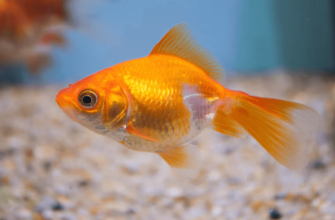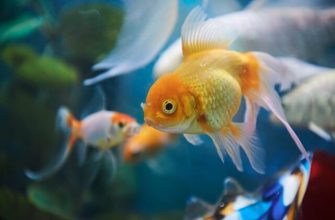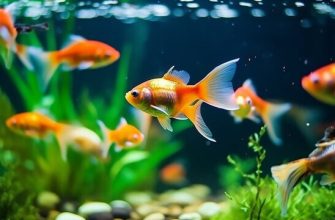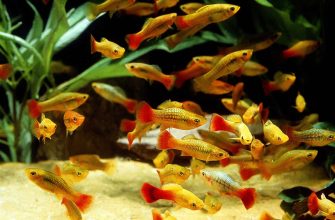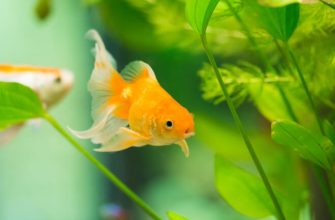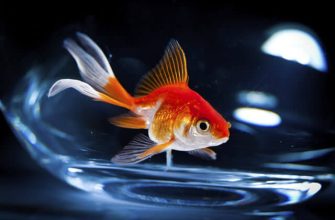Goldfish changing colors can be alarming for owners, but it’s often a natural part of a goldfish’s life cycle. All fish species change color at some point, and it’s usually a sign of good health and age progression. However, sometimes unusual color changes like turning black can indicate an underlying issue.
To hook readers in, here’s an interesting fact – juvenile goldfish actually start out black or gray before turning their iconic golden orange color. So a black goldfish isn’t necessarily cause for concern! We’ll explore the reasons goldfish turn black and when owners should be worried in this article.
Reasons for Black Coloration
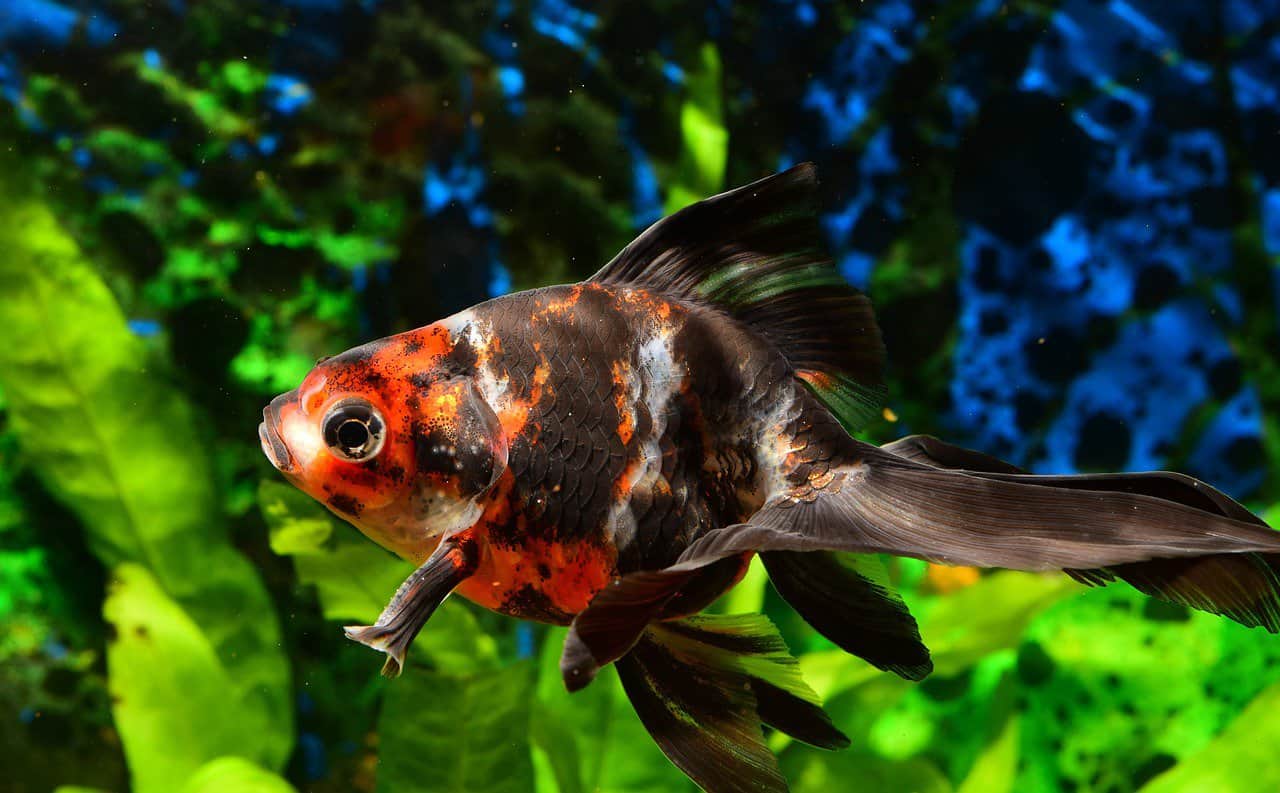
The black coloration in goldfish is caused by melanin, which is a pigment that controls skin and scale color. Goldfish produce melanin naturally, and an increase in melanin production will lead to darker black coloring.
Melanin helps protect the skin and scales from ultraviolet radiation damage. An increase in melanin production is often triggered by environmental stressors like poor water quality, infections, or inadequate nutrition. The melanin causes the scales to turn black, which acts as a natural sunblock to protect the fish.
Some goldfish breeds like Black Moors have been selectively bred to have higher melanin levels and exhibit black coloration. But in regular goldfish, a sudden increase in melanin usually signals an underlying issue that needs to be addressed.
Diet Issues
A goldfish’s diet can have an effect on its coloration. Deficiencies in certain nutrients, especially carotenoids, can cause fading or darkening of colors. Carotenoids are pigments that produce bright orange, red, and yellow colors in fish. If a goldfish’s diet lacks foods rich in carotenoids, like shrimp, carrots, and spinach, its vibrant colors may start to fade over time. This carotenoid deficiency shows up as a loss of color, especially on the body and fins. It typically leads to a more silvery or gray appearance rather than black, however.
A diet low in protein can also impact color, as protein is needed to synthesize pigments like melanin. But generally a poor diet leads to faded color rather than blackening. True blackening is more likely due to other factors. Improving nutrition with a varied diet rich in carotenoids and protein sources like shrimp and worms can sometimes help enhance color over time. But existing black spots are unlikely to revert back to the original color.
Environmental Factors
Environmental factors like poor water quality, temperature fluctuations, and metals exposure can cause goldfish to turn black.
Poor water quality due to high ammonia, nitrites, or nitrates stresses fish and causes ammonia burns, turning the skin and fins black. Regular partial water changes and testing for these compounds is important. Drastic temperature fluctuations, either too hot or too cold, can also stress goldfish and contribute to blackening. Keep the tank water between 65-75°F.
Finally, exposure to metals like copper and iron can also discolor goldfish. Avoid using metal decorations and be mindful of water source. With improved conditions, the black coloring may gradually fade.
Diseases and Parasites
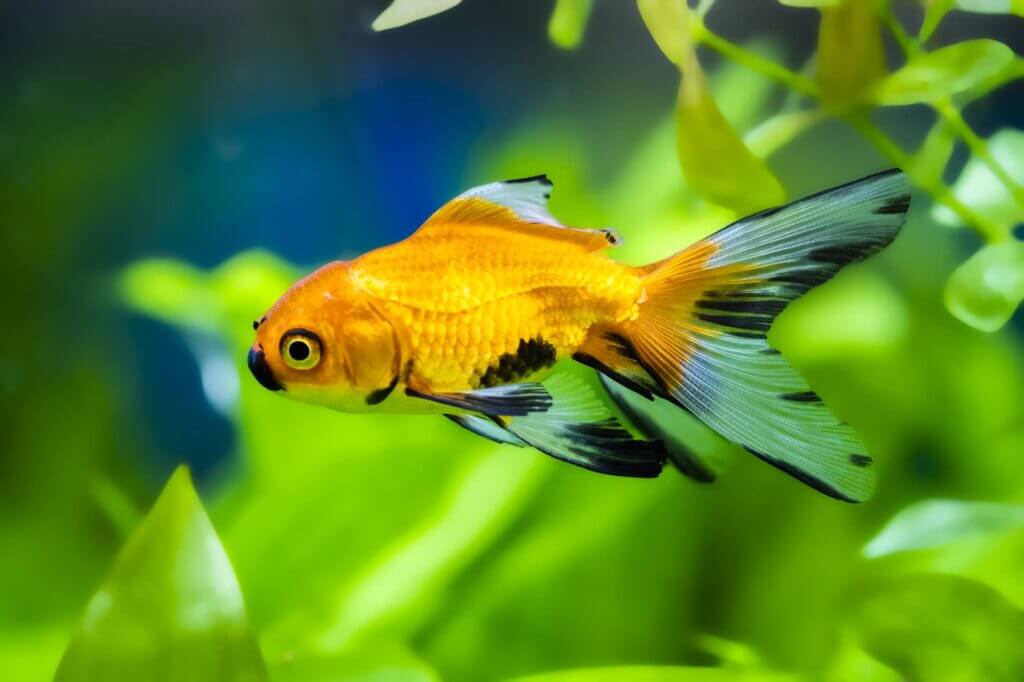
Black spots on a goldfish can be caused by certain parasitic diseases like black ich (Cryptocaryon irritans). Black ich is a protozoan parasite that attaches itself to a fish’s body, fins, and gills. It feeds on the fish’s blood and tissues, causing small black dots or cysts to appear on the skin and fins which look like grains of black pepper. The cysts can multiply rapidly under stressful conditions like poor water quality, overcrowding, or fluctuations in temperature.
Other protozoan parasites like Chilodonella and Costia can also cause black or gray lesions on goldfish. Fungal infections like Saprolegnia can lead to black patches or cotton-like growths. Bacterial infections like columnaris or fin rot can create black edges or streaks on fins. If the black spots are accompanied by other symptoms like lethargy, loss of appetite, rapid breathing, or rubbing against objects, it likely indicates an underlying illness.
Injuries
Physical injuries like bites, scrapes, or falls can cause black markings on goldfish as they heal. When a goldfish suffers an injury, the wound often turns black during the healing process as a natural reaction. This is because melanin, the pigment that causes black coloration, is produced at injured sites on the body. The black markings indicate the injury site is healing and new tissue is forming.
Once the wound fully heals, the black coloration usually fades. However, serious physical trauma can leave permanent black scars or patches on a goldfish. Providing optimal water quality, reducing tank aggression, and using aquarium-safe antibiotics can help injured goldfish heal. But preventing physical injuries in the first place is ideal for goldfish health and appearance.
Genetics
Some goldfish develop black coloration due to genetic factors. Certain pigment genes can cause increased production of melanin, the pigment responsible for black color in fish.
One genetic condition is melanism, which causes an overproduction of melanin. Goldfish that carry melanistic genes will turn darker or black as they mature. Selective breeding can increase the prevalence of melanistic traits in captive goldfish varieties. However, the melanistic gene is somewhat unstable and fish may lose black coloration over time.
Other pigment genes like midnight black or chocolate can also darken goldfish coloration. But true genetic black is quite rare compared to environmental causes. Unless intentionally bred, it’s less likely a pet goldfish’s black color is due purely to genetics.
Age
As goldfish age, their colors can fade and darken due to pigment changes. This is a natural process that happens as the fish gets older. The pigment cells called melanophores spread out as the fish matures, causing the skin to darken. Fading and darkening of colors is common in older goldfish over 2-3 years old. The orange and red pigments tend to fade first, causing the fish to turn more yellow.
Dark spots or patches may also appear, turning areas black or brown. This color change is not harmful to the fish, but rather a sign of aging. Proper care and diet can help slow color fading, but it is generally unavoidable in mature goldfish. So if an older goldfish starts to turn black, it could simply be a result of reaching old age and natural pigment changes.
When to Be Concerned

It’s normal for goldfish to change colors throughout their lives, but dramatic or sudden shifts in pigmentation can be a sign of illness.
Here are some guidelines on when black color changes may warrant a visit to an aquatic veterinarian:
-
The black spots or patches appear suddenly, spread quickly, and/or seem to be getting worse over a period of days. This could indicate a bacterial infection, parasite infestation, or fungal infection that requires treatment.
-
The black color accompanies other symptoms like ragged fins, ulcers, cloudy eyes, lethargy, lack of appetite, or gasping at the surface. The color change is likely a secondary symptom of a larger health problem.
-
The goldfish’s eyes, gills, or fins turn black and appear damaged or rotting. This can result from ammonia burns, injuries, or tissue necrosis. Immediate intervention is needed.
-
A goldfish that was previously very light in color turns completely black over a short period of time. While some natural color shifts can be dramatic, such an extreme change may indicate a serious issue.
-
You observe any other signs of stress, discomfort, or decline in the goldfish’s health that seem correlated with the black coloration. If the pigment change worries you, it’s better to be safe than sorry.
In general, contact an aquatic vet if the black color is rapidly worsening, accompanied by other symptoms, or causing you significant concern. A vet can help diagnose and treat any underlying issue. With prompt care, many goldfish are able to make a full recovery.
Summary
Goldfish can turn black for a variety of reasons. Young goldfish often start out black or gray before developing their mature colors over time. Dietary issues like malnutrition can cause fading or loss of color, resulting in a more blackish hue. Environmental factors like cold temperatures or dirty water can stress a goldfish and lead to blackening. Parasites, bacterial infections, or physical injuries may also trigger a change to darker colors.
In some cases, black coloration is simply genetic – certain goldfish breeds are predisposed to having black markings. Elderly goldfish often fade and darken with age as well. While black color change is not always a cause for alarm, owners should watch for signs of illness and ensure proper care and nutrition. Dramatic shifts to black warrant closer inspection to rule out underlying health issues.

